
New Forbes Column: From Piracy to Prosperity
My new Forbes column is [published](https://www.forbes.com/sites/jonobacon/2015/06/11/from-piracy-to-prosperity-inside-the-new-artists-toolbox/).
This article covers how technology has impacted how creatives, artists, and journalists create, distribute, and engage around their work.
For it I sat down with **Mike Shinoda**, co-founder of grammy award winning Linkin Park as well as **Ali Velshi**, host on Al Jazeera and former CNN Senior Business Corrospondent.


Go and read the article [here](https://www.forbes.com/sites/jonobacon/2015/05/06/creating-the-open-drone-ecosystem/).
After that you may want to see my previous article where I interviewed **Chris Anderson**, founder of [3DR](https://3drobotics.com/) and author of The Long Tail, where we discuss building the open drone revolution. Read that article [here](https://www.forbes.com/sites/jonobacon/2015/05/06/creating-the-open-drone-ecosystem/).
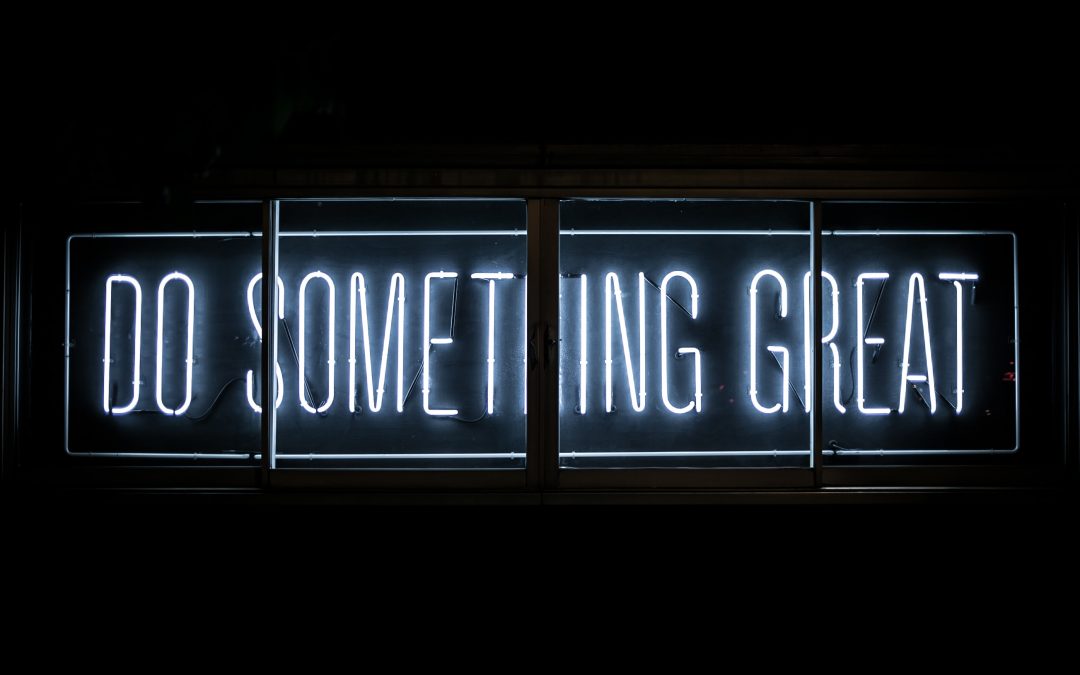
#ISupportCommunity
So the Ubuntu Community Council has asked Jonathan Riddell to step down as a leader in the Kubuntu community. The reasoning for this can be broadly summarized as “poor conduct”.
Some members of the community have concluded that this is something of a hatchet job from the Community Council, that Jonathan’s insistence to get answers to tough questions (e.g. licensing, donations) has resulted in the Community Council booting him out.
I don’t believe this is true.
Just because the Community Council has not provided an extensive docket of evidence behind their decision does not equate to wrong-doing. It does not equate to corruption or malpractice.
I do sympathize with the critics though. I spent nearly eight years pretty close to the politics of Ubuntu and when I read the Community Council’s decision I understood and agreed with it. For all of Jonathan’s tremendously positive contributions to Kubuntu, I do believe his conduct and approach has sadly had a negative impact on parts of our community too.
This has nothing to do with the questions he raised, it was the way he raised them, and the inference and accusations he made in raising such questions. We can’t have our leaders behaving like that: it sets a bad example.
As such, I understood the Community Council’s decision because I have seen these politics both up front and behind the scenes due to my close affiliation with Ubuntu and Canonical. For those people for who haven’t been so close to the coalface though, this decision from the CC feels heavy handed, without due evidence, and emotive in response.
Thus, in conclusion, I don’t believe the CC have acted inappropriately in making this decision, but I do believe that their decision needs to be illustrated further. The decision needs to feel complete and authoritative, but until we see further material, we are not going to improve the situation if everyone assumes the Community Council is some shadowy cabal against Jonathan and Kubuntu.
We are a community. We have more in common than what differs between us. Let’s put the hyperbole to one side and have a *conversation* about how we resolve this. There is an opportunity for a great outcome here: for better understanding and further improvement, but the first step is everyone understanding the perspectives of the people with opposing viewpoints.
As such `#ISupportCommunity`; our wider Ubuntu and Kubuntu family. Let’s work together, not against each other.

Announcing Chimp Foot.
I am delighted to share my new music project: [Chimp Foot](https://soundcloud.com/chimpfoot).
I am going to be releasing a bunch of songs, which are fairly upbeat rock and roll (no growly metal here). The first tune is called ‘Line In The Sand’ and is available [here](https://soundcloud.com/chimpfoot/line-in-the-sand).
All of these songs are available under a [Creative Commons Attribution ShareAlike](https://creativecommons.org/licenses/by-sa/3.0/us/) license, which means you can download, share, remix, and sell them. I am also providing a karaoke version with vocals removed (great for background music) and all of the individual instrument tracks that I used to create each song. This should provide a pretty comprehensive archive of open material.
Please follow me on [SoundCloud](https://soundcloud.com/chimpfoot) and/or on [Twitter](https://www.twitter.com/chimpfoot), [Facebook](https://www.facebook.com/chimpfoot), and [Google+](https://plus.google.com/u/0/101029556432307961390/posts).
Shares of this would be much appreciated, and feedback welcome for the music!?

Open Source, Makers, and Innovators
Recently I started writing a column on [opensource.com](https://www.opensource.com) called *Six Degrees*.
They just published my latest column on how Open Source could provide the guardrails for a new generation of makers and innovators
Go and read the column [here](https://opensource.com/business/15/4/makerspace-next-open-source-frontier).
You can read the two previous columns here:
* [Firing community members](https://opensource.com/life/15/3/how-to-fire-community-members)
* [What the Ubuntu phone could mean for open source](https://opensource.com/business/15/2/what-ubuntu-phone-could-mean-open-source)

Bobbing for Influence
Companies, communities, families, clubs, and other clumps of humans all have some inherent social dynamics. At a simple level there are leaders and followers, but in reality the lines are rarely as clear as that.
Many leaders, with a common example being some founders, have tremendous vision and imagination, but lack the skills to translate that vision into actionable work. Many followers need structure to their efforts, but are dynamic and creative in the execution. Thus, the social dynamic in organizations needs a little more nuance.
This is where traditional management hierarchies break down in companies. You may have your SVPs, then your VPs, then your Senior Directors, then your Directors, and so on, but in reality most successful companies don’t observe those hierarchies stringently. In many organizations a junior-level employee who has been there for a while can have as much influence and value, if not more, than a brand new SVP.
As such, the dream is that we build organizations with crisp reporting lines but in which all employees feel they have the ability to bring their creativity and ideas to logically influence the scope, work, and culture of the organization.
# Houston, we have a problem
Sadly, this is where many organizations run into trouble. It seems to be the same ‘ol story time after time: as the organization grows, the divide between the senior leadership and the folks on the ground widens. Water cooler conversations and bar-side grumblings fuel the fire and resentment, frustrations, and resume-editing often sets in.
So much of this is avoidable though. Of course, there will always be frustration in any organization: this is part and parcel of people working together. Nothing will be perfect, and it shouldn’t be…frustration and conflict can often lead to organizations re-pivoting and taking a new approach. I believe though, that there are a lot of relatively simple things we can do to make organizations feel more engaging.
# Influence
A big chunk of the problems many organizations face is around influence. More specifically, the problems set in when employees and contributors feel that they no longer have the ability to have a level of influence or impact in an organization, and thus, their work feels more mechanical, is not appreciated, and there is little validation.
Now, influence here is subtle. It is not always about being involved in the decision-making or being in the cool meetings. Some people won’t, and frankly shouldn’t, be involved in certain decisions: when we have too many cooks in the kitchen, you get a mess. Or Arby’s. Choose your preferred mess.
The influence I am referring to here is the ability to feed into the overall culture and to help shape and craft the organization. If we want to build truly successful organizations, we need to create a culture in which the very best ideas and perspectives bubble to the surface. These ideas may come from SVPs or it may come from the dude who empties out the bins.
The point being, if we can figure out a formula in which people can feel they can feed into the culture and help shape it, you will build a stronger sense of belonging and people will stick around longer. A sense of empowerment like this keeps people around for the long haul. When people feel unengaged or pushed to the side, they will take the next shiny opportunity that bubbles up on LinkedIn.
Some Practical Things To Do
So, we get what the challenge ahead is. How do we beat it? Well, while there are many books written on the subject, I believe there are ten simple approaches we can get started with.
You don’t have to execute them in this order (in fact, these are not in any specific order), and you may place different levels of importance in some of them. I do believe though, they are all important. Let’s take a spin through them.
## 1. Regularly inform
A lack of information is a killer in an organization. If an organization has problems and is working to resolve them, the knowledge and assurance of solving these challenges is of critical importance to share.
In the Seven Habits, Covey talks about the importance of working on Important, and not just Urgent things. In the rush to solve problems we often forget to inform where changes, improvements, and engagement is happening. No one ever cried about getting too much clarity, but the inverse has resulted in a few gin and tonics in an evening.
There are two key types of updates here: informational and engagement. For the former, this is the communication to the wider organization. It is the memo, or if you are more adventurous, the podcast, video presentation, all-hands meeting or otherwise. These updates are useful, but everyone expects them to be very formal, lack specifics, and speak in generalities.
The latter, engagement updates, are within specific teams or with individuals. These should be more specific, and where appropriate, share some of the back-story. This gives a sense of feeling “in” on the story. Careful use of both approaches can do wondrous things to build a sense of engagement to leadership.
## 2. Be collaborative around the mission and values
Remember that mission statement you wrote and stuck on a web page or plaque somewhere? Yeah, so do we. Looked at it recently? Probably not.
Mission statements are often a broad and ambiguous statement, once written, and mostly forgotten. They are typically drafted by a select group of people, and everyone on the ground in service of that very mission typically feels rather disconnected from it.
Let’s change that. Dig out the mission statement and engage with your organization to bring it up to date. Have an interactive conversation about what people feel the broader goals and opportunities are, and take practical input from people and merge it into the mission. You will end up with a mission that is more specific, more representative, and in which people really felt a part of.
Do the same for your organizational values, code of conduct, and other key documents.
## 3. Provide opportunities for success
The very best organizations are ones where everyone has the opportunities to bring their creativity to the fold and further our overall mission and goals. The very worst organizations shut their people down because their business card doesn’t have the right thing written on it, or because of a clique of personalities.
We want an environment where everyone has the opportunity to step to the plate. An example of this was when I hired a translations coordinator for my team at Canonical. He did great work so I offered him opportunities to challenge himself and his skills. That same guy filled my shoes when I left the Canonical few years later.
Now, let’s be honest. This is tough. It relies on leaders really knowing their teams. It relies on seeing potential, not just ticked-off work items. If you create a culture though where you can read potential, tap it, and bring it into new projects, it will create an environment in which everyone feels opportunity is around the corner if they work hard.
## 4. If you Make Plans, Action Them
This is going to sound like a doozy, but it blows me away how much this happens. This is one for the leaders of organizations. Yes, you reading this: this includes you.
If you create a culture in which people can be more engaged, this will invariably result in new plans, ideas, and platforms. When these plans are shared, those people will feel engaged and excited about contributing to the wider team.
If that then goes into a black hole never to be assessed, actioned, or approved, discontentment will set in.
So, if you want to have a culture of engagement, take the time to actually follow up and make sure people can actually do something. Accepting great ideas, agreeing to them, and not following up will merely spark frustration for those who take the initiative to think holistically about the organization.
## 5. Regularly survey
It never ceases to amaze me how valuable surveys can be. You often have an idea of what you think people have a perspective on, you decide to survey them, and the results are in many cases enlightening.
Well structured surveys are an incredibly useful tool. You don’t need to do any crazy data analysis on these things: you often just need to see the general trends and feedback. It is important in these surveys to to always have a general open-ended question that can gather all feedback that didn’t fit neatly into your question matrix.
Of course, there is a whole science around running great surveys, and some great books to read, but my primary point here is to do them, do them often, and learn-from and action the results.
One final point: surveys will often freak managers out as they will worry about accountability. Don’t treat these worries with a sledgehammer: help them to understand the value of learning from feedback and to embrace a culture in which we constantly improve. This is not about yelling about mistakes, it is about exploring how we improve.
## 6. Create a thoughtful management culture
OK, that title might sound a little fluffy, but this is a key recommendation.
I learned from an old manager a style of management that I have applied subsequently and that I feel works well.
The idea is simple: when someone joins my team, I tell them that I want to help them in two key ways. Firstly, I want them to be successful in their role, to have all the support they need, to get the answers they need, and to be able to do a great job and enjoy doing it. Most managers focus their efforts here.
What is important is the second area of focus as a manager. I tell my team members that I want to help them be the very best they can be in their career; to support, mentor, and motivate them to not just do a great job here at the organization, but to feel that this time working here was one that was a wider investment in their career.
I believe both of these pledges from a manager are critical. Think about the best managers and teachers you have had: they paid attention to your immediate as well as long-term success.
If you are on an executive team of company, you should demand that your managers provide both of these pledges to their teams. This should be real, not just words, and be authentic.
## 7. Surprise your staff
This is another one for leaders in an organization.
We are all people and in business we often forget we are people. We all have hobbies, interests, ideas, jokes, stories, experiences to share. When we infuse our organizations with this humanity they feel more real and more engaging.
In any melting pot of an organization, some people will freely share their human side…their past experiences, stories, families, hobbies, favorite movies and bands…but in many cases the more senior up the chain you go, these kinds of human elements become isolated and shared with people who have a similar rank in the organization. This creates leadership cliques.
On many cases, seeing leaders surprise their staff and be relaxed, open, and engaging, can send remarkably positive messages. It shows the human side of someone who may be primarily experienced by staff as merely giving directives and reviewing performance. Remember, folks, we are all animals.
## 8. Set expectations
Setting expectations is a key thing in many successful projects. Invariably though, we often think about the expectations of consumers of our work; stakeholders, customers, partners etc.
It is equally important to set expectations with our teams that we welcome input, ideas, and perspectives for how the team and the wider organization works.
I like to make this bluntly clear to anyone I work with: I want all feedback, even if that feedback is deeply critical of my or the work I am doing. I would rather have an uncomfortable conversation and be able to tend to those concerns, than never to hear them in the first place and keep screwing up.
Thus, even if you think it is well understood that feedback and engagement is welcome, make it bluntly clear, from the top level and throughout the ranks that this is not only welcome, but critical for success.
## 9. Focus on creativity and collaboration
I hated writing that title. It sounds so buzzwordy, but it is an important point. The most successful organizations are ones that feel creative and collaborative, and where people have the ability to explore new ideas.
Covey talks about the importance of synergy and that working with others not only brings the best out of us, but helps us to challenge broken or misaligned assumptions. As such, getting people together to creatively solve problems is not just important for the mission, but also for the wellbeing of the people involved.
As discussed earlier though, we want to infuse specific teams with this, but also create a general culture of collaboration. To do this on a wider level you could have organization-wide discussions, online/offline planning events, incentive competitions and more.
## 10. Should I stay or should I go?
This is going to be a tough pill to swallow for some founders and leaders, but sometimes you just need to get out the way and let your people do their jobs.
Organizations that are too directed and constrained by leadership, either senior or middle-management, feel restrictive and limiting. Invariably this will quash the creativity and enthusiasm in some staff.
We want to strike a balance where teams are provided the parameters of what success looks like, and then leadership trusts them to succeed within those parameters. Regular gate reviews make perfect sense, but daily whittering over specifics does not.
This means that for some leaders, you just need to get out the way. I learned this bluntly when a member of my team at Canonical told me over a few beers one night that I needed to stop meddling and leave the team alone to get on with a project. They were right: I was worried about my teams delivery and projecting that down by micro-managing them. I gave them the air they needed, and they succeeded.
On the flip side, we also need to ensure leadership is there for support and guidance when needed. Regular check-ins, 1-on-1s, and water-cooler time is a great way to do this in a more comfortable way.
I hope this was useful and if nothing else, provided some ideas for further thinking about how we build organizations where we can tap into the rich chemistry of ideas, creativity, and experience in our wider teams. As usual, feedback is always welcome. Thanks for reading!
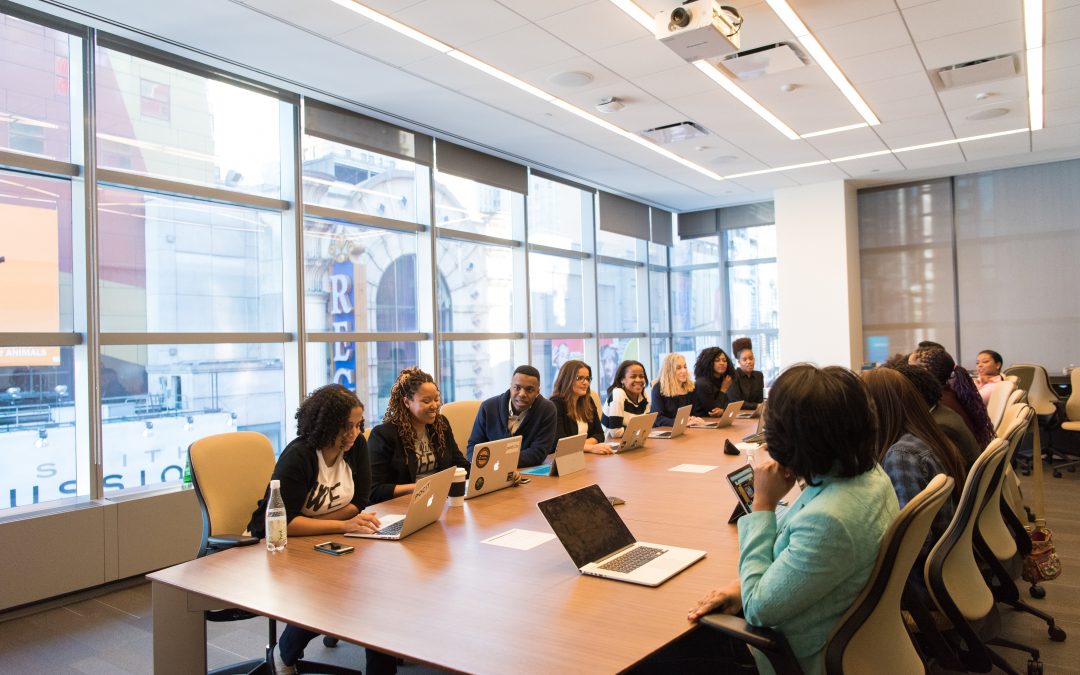
Video Phone Review and Wider Thoughts
I recorded and posted a video with a detailed review of the [bq Aquaris E4.5 Ubuntu phone](https://www.bq.com/gb/ubuntu.html), complete with wider commentary on the scopes and convergence strategy and the likelihood of success.
See it below:
Can’t see it? See it [here](https://www.youtube.com/watch?v=CR4baLQmU0s).
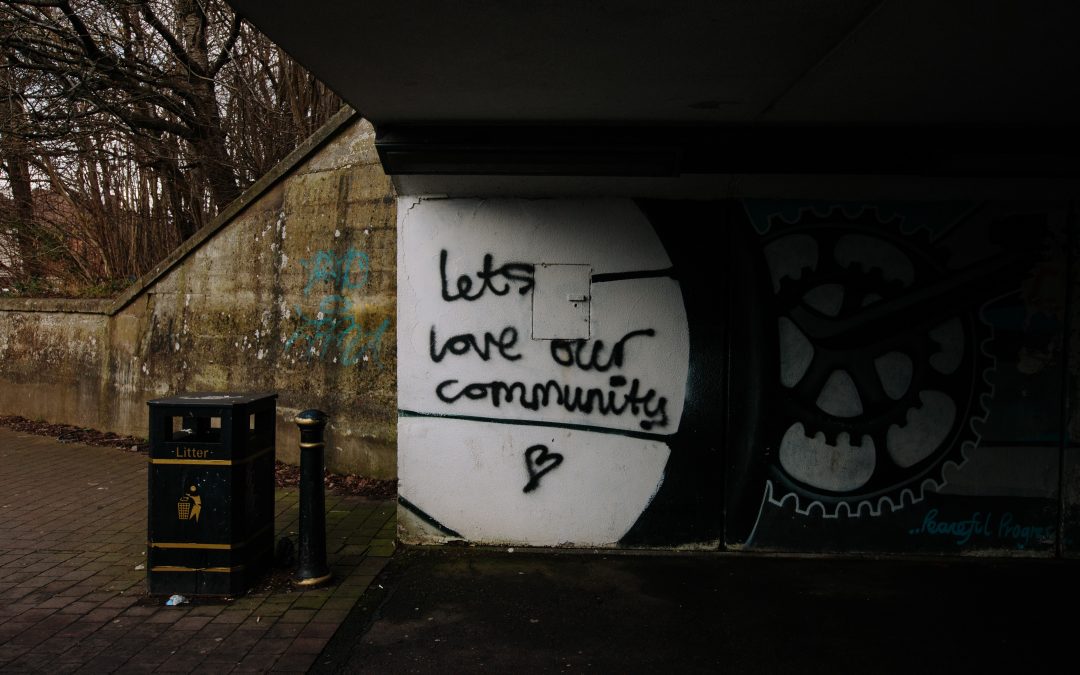
Bad Voltage: Live @ SCALE13x
As regular readers of my blog will know, I rather like the [SoCal Linux Expo](https://www.socallinuxexpo.org/), more commonly known as *SCALE*. I have been going for over eight years and every year it delivers an incredible balance of content and community spirit. I absolutely love going every year.
Other readers may also know that I do a podcast with three other idiots every two weeks called [Bad Voltage](https://www.badvoltage.org). The show is a soup of Linux, Open Source, technology, digital rights, politics, and more, all mixed together with reviews, interviews, and plenty more. I am really proud of the show: I think it is fun but also informative, and has developed an [awesome community](https://community.badvoltage.org) around it.

Given my love of SCALE and Bad Voltage, I am therefore tickled pink that we are going to be taping **Bad Voltage: Live** at SCALE. This will be our very first show in front of a live audience, and in-fact, the first time the whole team has been in the same building before.
The show takes place on the evening of **Fri 20th Feb 2015** in the main La Jolla room.
The show will be packed with discussions, contests, give-aways, challenges, and more. It will be a very audience participatory show and we will be filming it as well as recording the podcast, ready for release post-SCALE.
So, be sure to get along and join the show on the evening of **Fri 20th Feb 2015**, currently slated to start at 9pm, but the time may adjust, so keep your eye on the schedule!
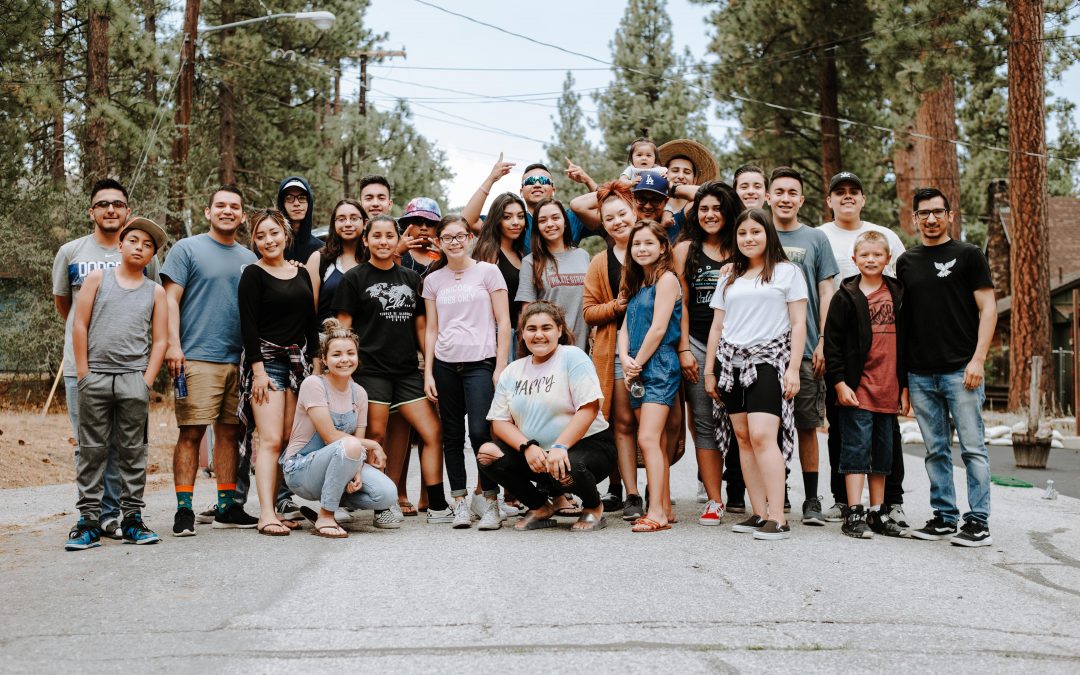
Designers Needed to Help Build Software to Teach Kids Literacy
**Designers!** Imagine you could design a piece of Open Source tablet software that teaches a child how to read, write, and perform arithmetic, without the aid of a teacher. This is not designed to replace teachers, but to bring education where little or none exists.
Just think of the impact. UNESCO tells us that 54 million children have *zero* access to education. 250 million kids have rudimentary access to education but don’t have any literacy skills. If we can build software that teaches kids literacy, think of the opportunities this opens up in their lives, and the ability to help bring nations out of poverty.
The [Global Learning XPRIZE]() is working to solve that problem and help build this technology.

## A Foundation of Awesome Design
This is where designers come in.
We want to encourage designers to use their talent and imagination to explore and share ideas of how this software could look and work. Designers create and craft unique and innovative experiences, and these ideas can be the formation of great discussions with other members of the community.
We are asking designers to explore and create those experiences and then share those wireframes/mockups in the [XPRIZE community](https://forum.xprize.org). This will inspire discussion and ideas for how we create this important software. This is such an important way in which you can participate.
Find out more about how to participate by [clicking right here](https://forum.xprize.org/t/designers-join-the-global-learning-xprize-design-drive/1074) and please share this call for designers widely – the more designs we can see, the more designers involved, the more ideas we can explore. Every one of you can play such a key role in building this technology. Thanks!
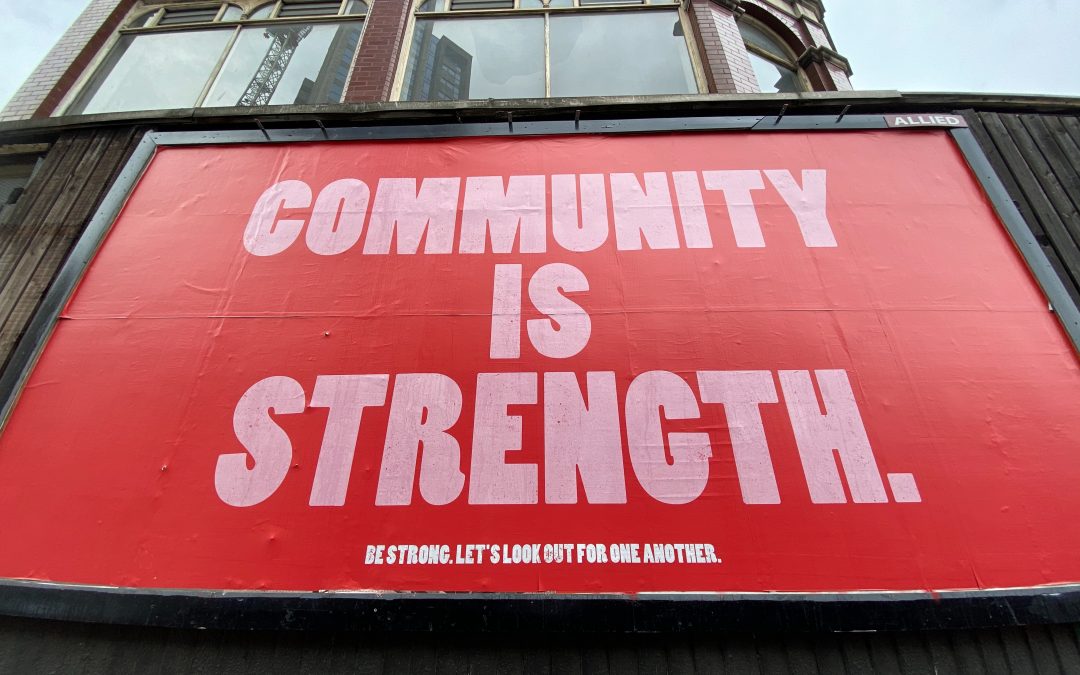
Global Learning XPRIZE: Call For Teams!
As many of my regular readers will know, I joined the [XPRIZE Foundation](https://www.xprize.org) last year. At XPRIZE we run large competitions that incentivize the solution of some of the grandest challenges that face humanity.
My role at XPRIZE is to create a global community that can practically change the world via XPRIZE, inside and outside of these competitions. You will be reading more about this in the coming months.
Back in September we launched the [Global Learning XPRIZE](https://learning.xprize.org). This is a **$15 million** competition that has the ability to impact over 250 million kids. From the website:
> The Global Learning XPRIZE challenges teams from around the world to develop open source and scalable software that will enable children in developing countries to teach themselves basic reading, writing and arithmetic within the 18 month period of competition field testing. Our goal is an empowered generation that will positively impact their communities, countries and the world.
Many of my readers here are Open Source folks, and this prize is an *enormous* Open Source opportunity. Here we can not only change the world, but we can create Open Source technology that is at the core of this revolution in education.
Not only that, but a key goal we have with the competition is to encourage teams and other contributors to collaborate around common areas of interest. Think about collaboration around storytelling platforms, power management, design, voice recognition, and more. We will be encouraging this collaboration openly on our forum and in GitHub.
You will be hearing more and more about this in the coming months, but be sure to [join our forum to keep up to date](https://forum.xprize.org).
## Call For Teams
Since we launched the prize, we have seen an awesome number of teams registering to participate. Our view though is that the more teams the better…it creates a stronger environment of collaboration and competition. We want more though!
*Can’t see the video? See it [here](https://www.youtube.com/watch?v=L3m8kLcbmY4)!*
As such, I want to encourage you all to consider joining up as a team. We recommend people form diverse teams of developers, designers, artists, scientists, and more to feed into and explore how we build software that can automate the teaching of literacy. Just think about the impact that this software could have on the world, and also how interesting a technical and interaction challenge this is.
To find out more, and to sign up, head over to [learning.xprize.org](https://learning.xprize.org) and be sure to join our [community forum](https://forum.xprize.org) to be a part of our community as it grows!

Bridging Marketing and Community
In the last five years we have seen tremendous growth in community management. Organizations large and small are striving to build strong, empowered communities that contribute to and support their work. These efforts are focused on a new form of engagement, one that builds engaged communities that are part of the fabric that achieves success.
This growth in community management has been disruptive. Engineering, governance, and other areas have been turned upside down with this new art and science. This disruption has been positive though, producing new cultures and relationships and a new feather to our collective bows in achieving our grander ambitions.
If there is one area where this disruption has made the strongest lightning bolt, it has been *marketing and brand management*.
Every year I run the [Community Leadership Summit](https://www.communityleadershipsummit.com/) in Portland, and every year I hear the same feedback; the philosophical, strategic, and tactical differences between marketing and community managers. These concerns have also been shared with me in my work as a community strategy and management consultant.

The Community Leadership Summit
This worries me. When I see this feedback shared it tells a narrative of “*us and them*”, as if marketing and brand managers are people intent on standing in the way of successful communities.
This just isn’t true.
Marketing and brand managers are every bit as passionate and engaged about success as community managers. What we are seeing here is a set of strategic and tactical differences which can be bridged. To build unity though we need to first see and presume the good in people; we are all part of the same team, and we all want to do right by our organizations.
## Philosophy
For most organizations, marketing operations are fairly crisply defined and controlled. You specify your brand and values and build multiple marketing campaigns to achieve the goals of brand awareness and engagement. This is usually pretty tightly controlled in terms of brand, values, mission, and campaigns, by the organization. This is designed to assure consistency across brand, voice, and messaging, and legal protection with your marks.
This kind of brand marketing is critical. We live in a world dominated by brands, and brand managers have to balance a delicate line between authentic engagement and feckless shlepping of their wares. There is an art and science to brand marketing and many tremendous leaders in this area such as Brendon Burchard, Aaliyah Shafiq, and Gary Briggs. These fine people and others have guided organizations through challenging times and an increasingly over-subscribed audience with shorter and shorter attention spans.
Community management takes a similar but different approach. Community managers seek to build open-ended engagement in which you create infrastructure, process, and governance, and then you invite a wider diversity of people and groups to join a central mission. With this work we see passionate and inspired communities that span the world, bringing a diverse range of skills and talents. Philosophically this is very much a “let a thousand roses bloom” approach to engagement.
## The Spider and the Starfish
I believe the strategic and tactical difference between many marketing and community managers can be best explained with the inspiring and excellent work of Ori Brafman and Rod Beckstrom in their seminal book, *The Starfish and the Spider*. The book outlines the differences between the centralized methods of organization (the spider), and the decentralized method (the starfish).

I don’t like spiders, so this was uncomfortable to add to this post.
In many traditional organizations the structure is very much like a spider. While there are multiple legs, there is a central body that is in charge. The body provides strategy, execution, and guidance from a small group of people in charge, and the outer legs serve those requirements.
Brand management commonly uses the spider model: the parameters of the brand, structure, values, and execution are typically defined by a central hand-picked team of people. While the brand may be open to multiple possibilities and opportunities, the center of the spider has to approve or reject new ideas. In many cases the center of spider has oversight and approvals over everything externally facing.
There are two core challenges with the spider model: *innovation* and *agility*. You may have the very best folks in the middle of that spider but like any group of human beings, they will reach the natural limits of their own creativity and innovation. Likewise, that team will face a limit in agility; there is only so much the center of the spider can do, and this will impact the spider as a whole.
The other organizational management model is the *starfish*. Here we empower teams to do great work and provide guidelines to help them be successful. This doesn’t lack accountability or quality, but we achieve it by defining strong standards of quality and trusting the teams to execute within them. We then deal with suboptimal cases where appropriate. Many modern organizations work this way, such as YouTube, Wikipedia, and many start-ups, and this is the inherent model in the community management world.
Now, let’s be honest here. I am a community management guy. Much as I like to think I am an objective thinker and unbiased, *everyone* is biased in some way. You are probably expecting me to pronounce these spider-orientated marketing and brand organizations dead and to hail the new starfish king of community management.
Not at all.
As I said earlier, brand management is *critical* to our success. What we need to do is first understand we are all on the same team, and secondly bridge the agility of community management with the consistency of brand management.
## Focus on the mission
In reality, we don’t want an entirely *spider* model or an entirely *starfish* model, we want a mixture of both; a *spiderfish*, if you will.
I am a strong believer in *Covey’s* philosophy of “*begin with the end in mind*”. We should sit down, dream a little, and then rigorously define our mission for our organization. With this mission in mind, every project, every initiative, every idea, should be assessed within the parameters of whether it furthers that mission. If it doesn’t, we should do something else.

Always think about where we want to get to.
When most organizations think with the end in mind they want their audience to feel a personal sense of connection to their work, and therefore their brand. The world of broadcast media is withering on the vine: We don’t just sit there and mindlessly devour content with a bag of Cheetos in hand. We want to engage, to interact, to be a part of that message and that content. If we are passionate about a brand, we want to play an active role in how we can make that brand successful. We want to transition from being a member of the *audience* to being a member of the *team*.
Most brand managers want this. All community managers want and *should* achieve this. Thus, brand and community managers are really singing from the same hymn sheet and connected to the same broader mission. Brand and community managers are simply people with different skill-sets putting different jigsaw pieces into the same puzzle.
So how do we strike that balance between brand and community? Well, I have some practical suggestions that may be useful:
### 1. Align strategy
Your marketing and community strategies need to be well-understood and aligned. Both teams should have regular meetings and a clear understanding of what both teams are doing. This serves two key functions. Firstly, it will mean that everyone has an understanding of what everyone is working on. Secondly, it will clearly demonstrate the importance and value of both teams, be able to identify positive and negative touch points, and bring balance to them.
Now, this is easier said than done. Strategy will change and adapt and it can be tough to keep everyone in the loop at once. As such, at a minimum focus on connecting the team leads together; they can then communicate this to their respective teams.
### 2. Your future won’t be 100% of what you expect it to be
There is a great rule of thumb in project management of “*you will achieve your goals, but what it will be different to what you expect*”. We should always remind our brand and community managers that part of bridging two different skill sets and philosophies means that our work will be a little different than we may expect.
Our goal here is the consistency of an awesome brand manager with the engagement of an awesome community manager. This may mean that a community manager’s work may be a little more tempered and conservative and a brand manager’s work may be a little more agile and freeform. This will feel weird and awkward at first, but sends us in the right direction to achieve our broader mission in our organization.
### 3. Have a flexible brand/trademark policy and communicate it clearly
One of the key challenges in balancing brand and community management is that communities typically want to use brands themselves in their work in a freeform way. This can include printing signs for events, using the brand on websites and social media, printing t-shirts and merchandise, creating presentation slides, and more. The brand is our shared identity, both for the organization and the community.
It is important that we clearly define the lines of how the brand can and cannot be used. We want to empower our community to freely utilize the brand (and associated trade dress, fonts, colors, and more) to do amazing work, but we want to avoid our brand being cheapened and diluted.
To do this we should create a rigorous brand and trademark policy that outlines these freedoms and restrictions and clearly communicate it to the community.
A good example of this is the [Ubuntu Trademark Policy](https://www.ubuntu.com/legal/terms-and-policies/intellectual-property-policy); it crisply states these restrictions and freedoms and has resulted in a large and capable community and fantastic brand awareness.
### 4. Focus quality where it really matters
As I mentioned earlier, we really want to take a “spiderfish” approach to our organizatons. This means that we centrally define some aspects of policy, but we focus those central pieces on the most valuable and important areas.
The trick is that we want to focus quality assurance on the right places. The way in which we assess the brand consistency of a keynote presentation that will be beamed around the world should be different to how we assess a small presentation given at a local community group. If we treat everything the same we will burn our teams out and limit agility and creativity.
Likewise, our assessment of quality should be around consistency as opposed to stylistic differences. We want to encourage different styles and voices: our community will present a multitude of different narratives and ideas. Our goal is to ensure that they feel consistent and connected to our central mission.
As such, focus your spider body on the most critical pieces. If you don’t, those teams will be overworked and stressed as opposed to creatively inspired and engaged.
### 5. Always focus on the mission
I know I have banged this drum a few times already in this article, but we have to focus on our mission *every single day*.
Covey teaches us that we should collaboratively define and share our missions and that these missions should guide our work every day, not just be shoved in a cupboard or stuck to a dusty wall, never to be seen again. We should assess every idea, every project, every motivation within the parameters of what we are here to do.
This is critical at a tactical level (“should project foo be something we invest in?”) but also at a strategic level (“how do we balance marketing and community management to further our mission?”).
Enforcing this is a key responsibility for senior executives. Is is senior leadership that really defines the culture and tenor of our organizations so it can trickle down, and reminding and inspiring everyone of the bigger picture is essential.
I hope you find some of this useful. My primary goal with this article was to help bridge the divide between what I consider to be two critical roles in successful organizations: marketing and community management. While the cultures may be a little different, both have much to learn from each other, and much to bring to the world. I look forward to hearing from you all about your experiences and perspectives on how we continue to work together to do interesting and important work.
